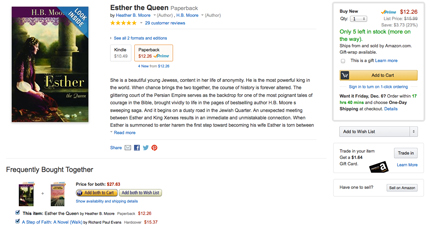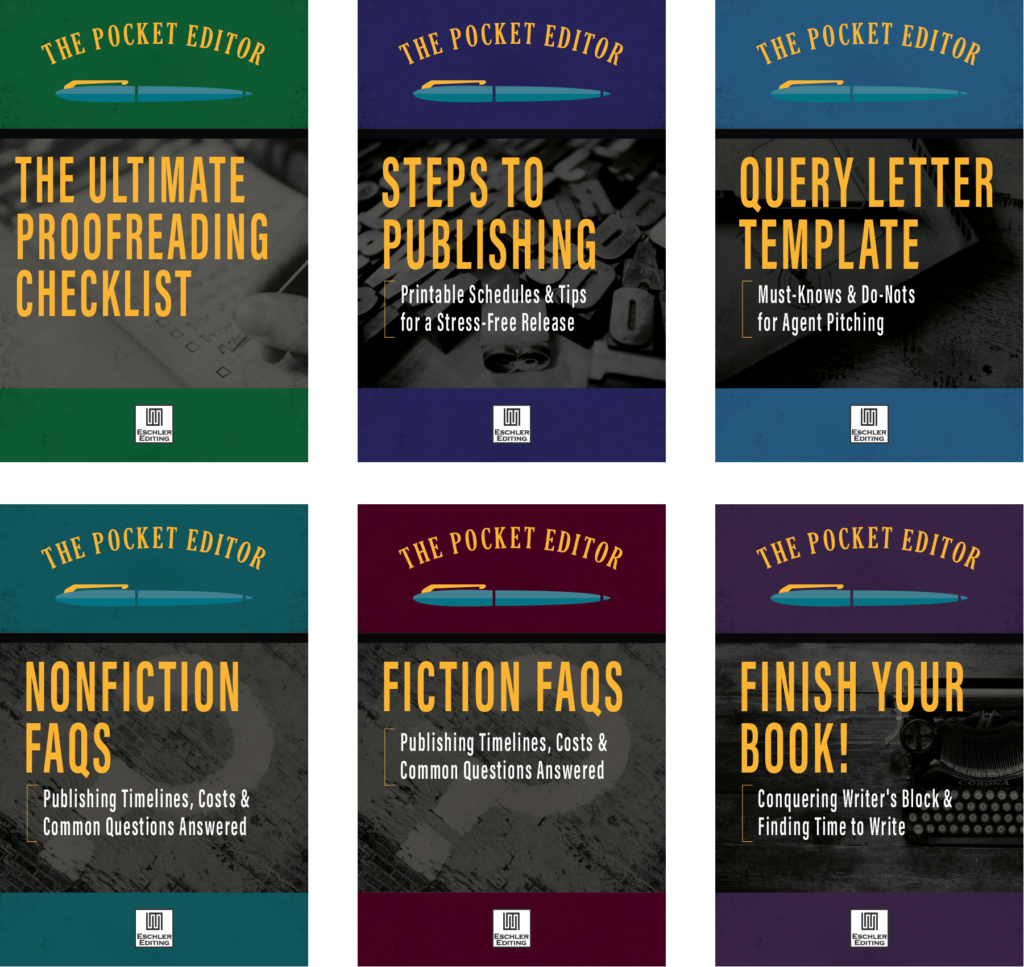Metadata & Categorizing Kindle Books
Guest Post by Heather Moore

Once you have your most-excellent manuscript edited, your cover designed, and the interior formatted into a mobi file, you are ready to upload to the Kindle platform on Amazon. And here’s where the fun really begins—because if you do just a few things right, you’ll find yourself on a Top 100 category list on Amazon. And you can easily imagine what that means: increased exposure and better sales, for starters. Choosing your category and keywords carefully lets you go after the people who are searching for exactly what you have to offer—instead of waiting around, wringing your hands, as you hope they’ll somehow stumble across your book.
But why aim low? Actually, you want to be in the top 50 of those lists, because Amazon shows 50 books per page on their Top 100 lists. That’s your goal. Everything starts to connect once you effectively categorize (more about that in a minute). Every time someone searches a category, the top sellers show up, and if you’re on the list, your exposure increases. But how do you get to the top of the lists? Or, in other words, how do you rise in rankings? You may have heard of Reddit, which is a social media news source entirely dependent on user submissions and views. The articles with the most views work their way to the Reddit homepage. This is a bit how Amazon category rankings work, but with the books with the most sales working their way to the top of the rankings. (If your book isn’t getting sales, Amazon will mercifully notify viewers that your book has at least been viewed by other customers searching similar terms. But rising in rank is about sales.)
When you load your book to Amazon, every word in your book becomes a searchable item. And that means everything, from the reviews to the text to the author bio. Anything else you add when you upload—such as the book description and editorial reviews—is also searchable. Because customers are searching terms to help them determine which books to buy, it’s important to select the right keywords that can be repeated throughout each searchable entity.
But wait. Before you choose your categories and keywords, do some research on Amazon. Find out in which categories the best-selling books in your genre are listed. Some will be very broad (fiction, romance, suspense), while others will be very narrow (art, Italian hotel, Egyptian history). If you choose a narrow category, you’ll probably hit a Top 100 list a day or two after your book is listed on Amazon. If you choose a broader category, you’ll be competing with other best-selling books in that same category—which means you’ll have less of a chance to reach the top.
Ready to get started? What follows is a quick overview of how metadata and categorizing works on Amazon, and how it can be a key sales tool for being a successful Amazon seller.
It’s All Greek to Me!
What is metadata? Metatags are search terms that readers use to find a book on a specific topic. Metatags are done internally in the mobi files through Calibre when you load your book to Amazon. However, in addition to the search terms tagged by Calibre, you’ll want to add your own, because if some of the search terms that would lead a willing buyer to your book aren’t actually in your book, you’ll want them connected to your book in some way. If you’re working with a publisher, give a metatag list to the publisher so the exact words you want people to find will be tagged.
What is categorizing? You can select 2 categories and 7 keywords that will help your book get categorized and positioned for selling on Amazon. Examples are things like age, era, setting, genre, and target audience. (Comparable authors and books can be used as keywords in the metadata terms you add or through reviews, endorsements, or the book description.) Categorizing is done when the Kindle file is uploaded through KDP on Amazon. (UPDATE from the E. Team: Amazon has a new metadata option relating to themes. You will need to give up a category/keyword option to use them, but they are worth it. Watch a video on this here when you’ve finished this article.)
And what do the Amazon rankings mean? There are several different Amazon rankings. The “Amazon Best Sellers” is an overall ranking that reflects the top books that are selling on the site overall, regardless of category. If you make the Top 100 list overall and can stay on it, that usually means you’re selling thousands of books a week on Amazon. Those are the heavy hitters. There’s also a Top 100 in each category, which is what you’re going to aim for at first. They’ve also started Amazon Charts bestseller lists.
How Do Metadata and Categorizing Work?
You want metadata and categorizing to maximize your exposure through the power of repetition. As an example of how to do that, I’m going to show you a keyword-strategizing chart I created for my historical novel, Esther the Queen.
Before I put together my chart, though, I did some research. I looked for a best-selling biblical novel I could compare to mine. I found it: The Red Tent by Anita Diamant. These were its categories and rankings at the time:
Amazon Best Sellers Rank: #2,612 in Books (See Top 100 in Books)
#77 in Books > Christian Books & Bibles > Literature & Fiction > Fiction
A nonfiction book on Jewish life:
#64 in Books > Religion & Spirituality > Judaism > Jewish Life
I then went to Christian Books & Bibles, and checked out the books listed in the Top 100. Then I clicked on those books to see what their rankings were. I slowly built a category list from the categories frequently listed for those best-sellers and decided where my book would best fit.
The Amazon page for any book you’re researching will also have “other categories” listed, so you can look for similar items in those categories (similar items could be similar books, genres, or topics):
Look for Similar Items by Category
Books > Christian Books & Bibles > Literature & Fiction > Fiction > Education & Reference > Literature & Fiction > Contemporary > Religion & Spirituality > Fiction
Obviously, doing the research is critical. Once I had all that information gathered, I created this strategy:
Other Examples of Books in Top 100 Categories and Their Keywords
To help you explore more how this works, here are a couple other examples of books from Top 100 category lists.
Sarah M. Eden’s Seeking Persephone
Amazon Best Sellers Rank: #1,594 Paid in Kindle Store (See Top 100 Paid in Kindle Store)
#20 in Books > Romance > Regency
#66 in Kindle Store > Kindle eBooks > Literature & Fiction > Genre Fiction > Romance > Historical Romance
Amazon Best Sellers Rank: #22,775 Paid in Kindle Store (See Top 100 Paid in Kindle Store)
#88 in Kindle Store > Kindle eBooks > Literature & Fiction > Genre Fiction > Horror > Ghosts
#98 in Books > Literature & Fiction > Genre Fiction > Horror > Ghosts
Additional Keyword Strategies
Other effective concepts, recommended in how-to resources, have to do with the “Book Description” and the “Reviews.” Every word in the description and a review becomes a searchable entity. When I get a few great reviews, I’ll add them to the beginning of my book description; check here to see how that works.
When you ask for a review, ask the reviewer to compare your book to another best-selling book title (remember metatags) and additionally use the category words relevant to that best-seller in the review. That way the review will have words that will become part of the Amazon algorithms when customers are shopping for your type of book. (You may have heard of using actual best-seller book titles/authors as category keywords: Amazon no longer lets you use other book titles or authors as keywords, so having them embedded in a review meets your metatagging goal without violating Amazon policy.)
Here is a “Book Description” example that uses words that will link the book to other authors and categories. I’ve bolded words that will help this book become categorized more effectively on Amazon. (As a reminder, that would be things like age, era, setting, genre, target audience, comparable authors, comparable books …)
From Leona & Me, Helen Marie (A Small Town U.S.A. Novel) by Lu Ann Staheli
Seven-year-old Helen Marie Heffner has a knack for getting into trouble, followed close behind by her older sister, Leona Mae. Whether it’s walking the barn beams like a tightrope, fooling the neighbor boys into thinking they’re being chased by a fiery jack-o-lantern, or making a mess rather than transferring a pattern for Mama’s Christmas surprise, Helen comes out the winner every time.
But life is not always fun and games in 1922 for this southern Indiana family. In the wake of the Depression of the previous two years, the girls and their mama are often left alone in Hancock’s Chapel while their papa travels to find work to keep the family finances alive. Lately, Mama’s been showing signs of not feeling well, and Helen is stuck at home, missing the entire school year while she recuperates from the rheumatic fever that struck her the year before. Mama fears the worst is about to happen. Everything from the barn owl, to the chicken thief, the stranger who passed by one evening to a poor neighbor-boy who falls into the ravine, all point to signs of trouble to come. And sure enough, it does.
Leona and Me, Helen Marie, a middle grade novel from A Small Town U.S.A. series, is hometown historical fiction in the style of Richard Peck (A Long Way from Chicago, The Teacher’s Funeral, Here Lies the Librarian) and Kate DiCamillo (Because of Winn-Dixie), with a touch of Laura Ingalls Wilder’s Little House on the Prairie thrown in for good measure.
Categorizing is not a one-hit wonder method, but it’s an important marketing tool to use when selling on Amazon. You can change your categories and keywords anytime, but know that it takes two to three days for them to become effective. When I change keywords, I wait a few weeks to see which lists are being hit. If I’m not happy with the results, then I can easily go back in and change the keywords until I get a combination with many reader hits. You can monitor ranking results and get additional ideas by looking at the “Customers … Also Bought” on the homepage of any book you’re researching.
Do This Now
- Put together a chart for your book as you research, choosing the keywords from best-seller comparable titles that will help your book find the right audience.
- Get Michael Alvear’s book—Make a Killing on Kindle (without Blogging, Facebook or Twitter). The Guerilla Marketer’s Guide to Selling e-Books on Amazon
—which is great at explaining how to use metadata effectively in the file creation process and how to categorize in the upload process.
- Still Greek to you? Or you’d rather eat Greek than learn it? Shoot us an email, as we’ve recently partnered with an Amazon-sales-strategy team that can probably save you a headache or two, and some precious time.
Your thoughts? What Amazon—or other e-book exposure—strategies have you found to be effective in getting your books sold? Or what motivates you to buy a book when searching on Amazon?
 Heather B. Moore is a four-time USA Today bestseller and award-winning author of more than eighty publications in diverse genres. She is the owner of Precision Editing Group and the publisher of the popular Timeless Romance Anthology series. Her websites are hbmoore.com and precisione
Heather B. Moore is a four-time USA Today bestseller and award-winning author of more than eighty publications in diverse genres. She is the owner of Precision Editing Group and the publisher of the popular Timeless Romance Anthology series. Her websites are hbmoore.com and precisione





Some very good information here and the starting point for my own focus with publishing. As mentioned, there’s more to marketing than just the categories and keywords, but these are the building blocks that get you to the next stage. And the real fun happens when you make it in the top 10, or better!
Hi Ron. What are some examples of some of the other types of online marketing, in relation to Amazon, that you enjoy? Just a bird’s eye view?
It goes without saying that marketing a book is a difficult thing to do. Anyone who’s tried it will agree. It’s not just competing in the sea of other books that makes it difficult, but the fact that things change, especially in our digital landscape. For example, the free promotion on Amazon used to work great to start a book promotion, and I know this because of some early success one of my clients had using it. But things have changed, and I no longer recommend using the free promotion period for marketing. It just doesn’t work like it used to…again, I speak from experience.
Ironically, one of my clients has been testing out the new Kindle Countdown promotion since yesterday and it’s just been awesome to watch! His book had dropped into the top 60 under the western subcategory on Amazon, and as I write this, he’s now ranked #3 in the category top 100 and #320 in Amazon’s overall bestseller rank. So I’d definitely have to recommend trying the new Kindle Countdown promo.
Aside from Amazon promotions though, Bookbub and some of the services similar to that can help boost sales, but you do have to get accepted which requires certain marketing steps early on. I also feel strongly about building a following on Facebook, and I’ve seen some positive things there for my clients as well.
At the end of the day though, I think it just boils down to being consistent in looking for new marketing opportunities every day, and you have to be willing to invest some money. Aside from the free resources Amazon has made available, the good marketing strategies I’ve seen success with cost money. I guess that fits well with the old saying “It takes money to make money!” Though I don’t agree that’s 100% the case, it is a necessary part for any author to have success.
Great post, Heather. I love the Alvear book, and this is a really helpful reminder of simple ways to get better exposure.
This is really interesting. Does this explain why I always get (what I consider) really random results during an Amazon search? I swear that I searched for “organic baby food” once and got something like “ninja sword” among the results. Granted, ninja babies need food too…
BookBub is a great tool, but a recent PW article says they are rejecting 80% of submissions now: http://www.publishersweekly.com/pw/print/20131202/60193-bookbub-closing-in-on-two-million-members.html
There are other up and coming programs that offer the same thing (like ReadsCheaply), but they are new and they don’t have the millions of subscribers yet.
I’ve heard good things about Kindle Countdown as well, and I just transferred a few of my titles into the KDP Select program so that I could try it out (which means you have to exclusively list your title on Amazon and no where else for 3 months). I just finished with their “free 5 day promotion” and had some nice success–as far as “free” goes. You have to be a KDP select title for that as well.
It’s true that the “free” is not as effective as it used to be as far as then getting the reader to buy your next book. The question becomes, how long will it take the reader to actually get to your free book since they likely have hundreds of other books on the Kindle or Nook? So that’s where other types of marketing come into play. If I see a book/author that I’ve already been interested in and have been paying attention to, then I’ll snatch that book during a promotion, and am more likely to read it within a few weeks of downloading. And then if I like it, I will likely go and buy another book.
Readers are more leery of “free” because some of them have been burned by unprofessional products, and others have simply gorged themselves on free downloads and can’t read everything. The successes that are still viable are when you have an entire series published, and book 1 is labeled as free. Or you are doing short-term promos through places like BookBub who can send out the announcement to tens of thousands of subscribers to your specific genre.
But like Ron said, the landscape is always changing, almost as fast as we are learning it. A hot marketing tool today might fizzle out in a couple of months. But building and maintaining a personal relationship with your readership will always be your best bet.
Heather, you’re right that Bookbub (and even services like it) are turning down a high number of submissions, but they have to. The more popular they become, the more selective they need to be. As an author, your best defense if you want to use services like this is to make sure you’re book is up to their standards. Write a good book, do the initial work to get as many positive reviews as you can and your odds go up.
Personally, I’ll never use the free promo to just give out a ton of books anymore. I’ll reserve it for friends and family if even that. I’ve read more than one article recently saying the free promo era is dead and I tend to agree. $0.99 is the new free!
And in regards to Kindle Countdown, I can report today that my first client to test it out had a huge success, selling over 1100 copies of his book worth over $700 in royalties over 3 days! And thanks to his new high ranking, his first day back at full price has been a $100 day…can’t complain about that!